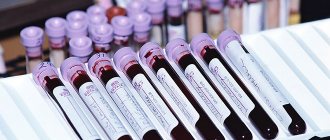Where is it synthesized?
Amylase - what is it? The name of this enzyme comes from the Greek word “amylon”, which means “starch” in Russian. In the human body, amylase is found in a number of tissues and organs. It is an enzyme (hydrolase) that breaks down complex carbohydrates. The concentration of this enzyme is quite high in the pancreas. It is synthesized by the acinar cells of this organ and secreted through the pancreatic ducts into the digestive tract, more precisely into the duodenum. In addition to the pancreas, the salivary glands are also capable of synthesizing amylase. An enzyme contained in saliva initiates the hydrolysis of starch while food is still in the oral cavity. Thus, the digestion process begins as soon as food enters the mouth.
What is alpha amylase and its role
Humans have two types of enzyme:
- alpha amylase pancreatic (P type);
- salivary glands (S type).
Very small amounts are also produced by other organs, for example, the intestines, uterine appendages, muscles, lungs, liver, kidneys, fallopian tubes.
Normally, amylase S is present most in the blood of the salivary glands - approximately 60%, the amount of pancreatic amylase P is correspondingly about 40%.
The biochemical analysis study form does not separate these types of blood enzyme. If it is necessary to differentiate the pathology, then a separate test for diastase fractions is performed.
On the form you can find the following abbreviations and abbreviations denoting this enzyme:
- blood amylase
- Amy;
- alpha-amylase;
- AML;
- serum amylase;
- Diastase.
Alpha amylase is an enzyme for digestion and is produced by the salivary glands, pancreas and begins its work already in the mouth. The function is the breakdown of carbohydrates into monosaccharides, or more precisely, the hydrolysis of alpha-1-4-glycosidic bonds in starch and dextrins.
Amylase level: analysis
Amylase - what is it? How to determine its level in the human body? The fact is that the pancreas, where this enzyme is produced, is very well supplied with blood. Normally, part of the enzyme (its minimum amount) enters the bloodstream. This hydrolase then passes through the kidneys and is excreted in the urine.
Blood alpha amylase - what is it? We'll talk about this in more detail below.
Description
Amylase is produced in the glands. In pregnant women it is formed in the mammary gland, in other people in the pancreas, salivary gland, as well as in the liver and kidneys. Excretion occurs through the genitourinary system.
Experts divide amylase into 3 types:
- alpha;
- beta;
- gamma.
The alpha type includes amylase from the pancreas and salivary glands. Beta-amylase is involved in the formation of the disaccharide maltose. It is present in plants, fungi and bacteria. Gamma amylase leads to the formation of glucose. Unlike other types, it is most active in an acidic environment at pH 3. In the human body, gamma amylase is present in 2 types:
- sour;
- neutral.
Since the stomach is acidic, enzymes do not function there. Neutralization of enzymes is carried out only on the surface of food masses. When the enzyme penetrates deeper, it works for a short time, decomposing polysaccharides to the level of maltose and dextrin. The most important stage of starch decomposition occurs in the duodenum. This process is influenced by alpha-amylase, which is found in gastric juice. In this area, the acidity is close to neutral, so the enzyme works well.
Normal amylase levels range from 12 to 32 mg starch/(mg*h), 12-32g/(h*l). If the indicator changes during diagnosis, this often indicates a disease of the pancreas. A more objective picture is revealed to the doctor after the patient submits a urine test. The normal level of amylase in urine is 65% - an enzyme produced by the pancreas. In an acute inflammatory process, it can reach up to 90% or more, while the enzyme of the salivary glands remains in the same amount.
An alpha-amylase test is often prescribed by doctors to detect diseases of the stomach, pancreas and salivary glands.
When is the test scheduled?
A blood test helps assess the condition of the body. Amylase - what is it, under what diseases does it increase in the blood? The level of alpha-amylase in blood plasma can increase several times in the following pathologies:
- Acute or chronic pancreatitis during exacerbation.
- Pancreatic necrosis is focal.
- Pancreatic oncology.
- Gallstone disease (in the presence of individual stones in the ductal system).
- Acute appendicitis.
- Kidney failure.
- Stomach bleeding.
- Intestinal obstruction.
- Alcoholism and alcohol intoxication.
- AIDS.
- Viral hepatitis.
- Mumps.
- Sarcoidosis.
- Typhoid fever.
- Abdominal (upper) injuries.
The level of alpha-amylase is reduced or not detected at all in cases of total necrosis of the pancreas, with stage 4 oncology of this organ, because gland tissue is replaced by tumor tissue, as well as cystic fibrosis (congenital pathology). During surgical interventions, when a significant part of the gland is removed, the level of amylase can also be sharply reduced.
Treatment and proper nutrition for high amylase
If you have a disease of the pancreas, you must strictly adhere to the diet. If you have a disease of the pancreas, you must strictly adhere to your diet. Any lesions of the pancreas are dangerous and serious pathologies, so only a doctor in specialized medical institutions can treat them. He will prescribe the necessary studies and, based on the results of the tests obtained, will be able to determine the severity of the disease and prescribe the necessary medications and prescribe the necessary treatment.
At home, diet is of paramount importance for the patient: It is urgently necessary to exclude from the menu:
- fried,
- fatty and spicy dishes,
- remove smoked meats,
- red meat,
- pickling,
- rich soups and broths,
- fatty and spicy sauces,
- spices and seasonings.
Not allowed:
- alcohol,
- tobacco,
- strong black coffee
- tea,
- artificial drinks and highly carbonated waters.
The patient needs to be provided with rest and proper dietary nutrition at short intervals and in limited portions. In case of damage to the pancreas, any amateur activity in the field of treating the disease can cause extremely dangerous consequences for health, since this organ is very sensitive and can react negatively to the wrong treatment.
It is necessary to strictly adhere to the doctor’s instructions and strictly follow his recommendations.
Possible complications Complications
If pancreatic amylase is elevated, this is an indicator of the dysfunction of the pancreas and, as a result, in the absence of timely and well-chosen treatment, can lead to the development of the following diseases and conditions:
- In women, pancreatitis is very often accompanied by disruption of the gallbladder and the development of cholelithiasis.
- A progressive disease can cause metabolic disorders and the development of anemia, lack of vitamins, which is manifested by low body weight, increased dryness of the skin, brittle nails and hair.
- Problems of this organ lead to the development of diabetes.
- Due to indigestion, food is poorly digested and not absorbed, which can cause severe flatulence, intestinal pain, diarrhea and frequent visits to the toilet.
Such serious problems force us to pay more attention to our health and, if a disease is detected as a result of a test, immediately begin the necessary treatment and switch to a strict diet.
Also recommended:
- Blood chemistry
- Amylase in urine
Under what conditions does amylase in the blood increase?
Blood amylase - what is it and how does this indicator change in pathologies of the pancreas? In acute pancreatitis, it increases sharply within 4-6 hours after the onset of the attack and continues to remain at a high level for up to five days. The increase in amylase enzymatic activity in the blood plasma usually does not depend on the severity of the disease. More often it's the other way around. With the destruction of the pancreas, a significant increase in the concentration of pancreatic alpha-amylase is not observed. An increase in its level may indicate an increased release of amylase into the general bloodstream.
In what cases is it possible to increase its concentration in the blood? This can usually be observed in the following conditions:
- Hypersecretion of pancreatic juice.
- Violation of the full outflow of pancreatic secretions through the pancreatic ducts into the duodenum.
- Inflammation of the pancreas itself or organs located close to it. The temperature of the inflamed organs rises and the blood flow in them increases, so there is an increased release of the enzyme into the blood.
- Pancreatic injuries.
- Poor diet and alcohol abuse.
Level of alpha-amylase in urine, mkat/l
- total alpha-amylase in a random urine sample – up to 7.67
- total alpha-amylase in daily urine – up to 11.1
- pancreatic alpha-amylase in urine - up to 5.83
Remember that each laboratory, or rather laboratory equipment and reagents, has its own standards. In the laboratory test form they appear in the column - reference values or norm.
Another unit of measurement for alpha-amylase levels is IU/L, which is international units per liter. It is quite easy to recalculate, since IU/l x 0.0167 = µkat/l.
Alpha amylase - what is it? Normal values in blood and urine
When reading the results of an amylase test, you should pay attention to the units in which it is expressed. It is usually customary to use “u/l” - units of amylase per liter of blood and “mkkatal/l” - microkatal in one liter. It should be clarified here that “catal” is a unit for measuring the activity of a catalyst.
Also, in different laboratories, the methods and reagents for determining amylase may differ slightly, so you should pay attention to the standards for this indicator, which are always indicated next to the test result. The first digit is the minimum value, the second is the maximum.
The norms of blood alpha-amylase and urine diastase are given in the table below:
| Analysis name | Norm in µkatal/l | Norm in U/l |
| Blood alpha amylase | 15-30 | 17-100 |
| Urine diastasis | 25-100 | up to 1000 |
In cases where there is a slight increase in indicators (by several units) and the person feels well, this is not a pathology. You need to worry when amylase levels increase several times. Attacks of acute pancreatitis can increase urine diastase and blood amylase by 100 times or more. These attacks are usually accompanied by nausea, vomiting and severe pain. This condition requires immediate hospitalization.
Normal Amylase Values
The concentration of amylase in the blood is measured not in its absolute amount, but in units of enzyme activity (units, U) per liter of substrate.
| normal values | Total amylase | Pancreatic amylase |
| Adults (serum) | <100 U/l | 40% total amylase |
| Adults (24 hours before) | <270 U/l | |
| Adults (spontaneous urine) | <460 U/l |
Normal values may vary depending on the measurement method used.
How to get tested for blood and urine amylase?
Blood for this test is taken from a vein. Usually it is taken in the morning on an empty stomach, but if you need to determine the amylase level urgently, for example, during an exacerbation of chronic pancreatitis, this can be done at any time. Such an analysis can be performed by any biochemical laboratory. As a rule, modern laboratories use enzymatic methods for diagnosing amylase activity. This is a specific and precise method. The analysis is performed quite quickly.
It is also better to take a urine diastasis test in the morning. A medium portion of urine is collected and immediately delivered to the laboratory. Research on this indicator is of great importance in the diagnosis of various diseases.
High level treatment
What to do if abnormal alpha amylase levels are detected? It is important to find out the reason why the rise occurred. If a slight increase is associated with diet and a single dose of alcohol, then after 2 days its level will be normal.
Read also FSH analysis in women: norms and interpretation of results
If we are talking about acute pancreatitis, then diastasis in the blood will be high. If the process proceeds favorably, its level will begin to decrease after 3-4 days. In severe cases, complex treatment is required, in some cases with surgery. Then use:
- diet, and most often hunger;
- cold on the pancreas area;
- drugs to suppress pancreatic function (octreotide);
- anesthesia;
- intravenous administration of infusion solutions;
- antibiotics for concomitant infections;
- decreased gastric secretion.
In this case, lowering amylase levels is not the goal. All treatment is aimed at limiting damage to the pancreatic parenchyma.











